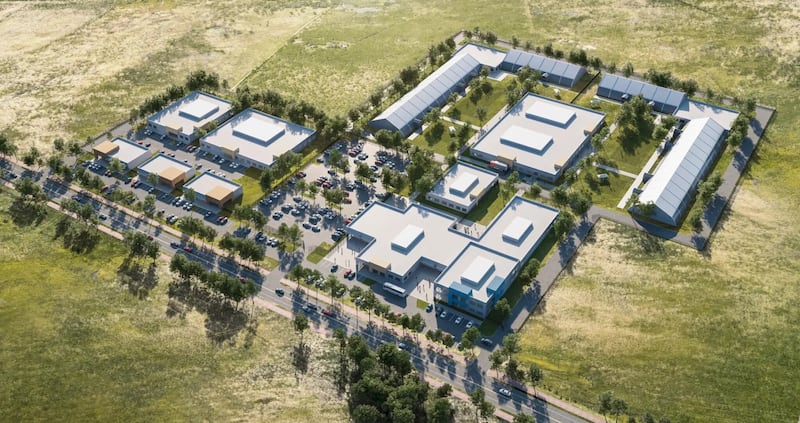Utah’s homeless coordinator says a proposed 1,300-bed state homeless services campus in northwest Salt Lake City is the cheapest solution to a complex and growing issue.
However, its proposed location and other project elements have sparked concerns from residents, various groups and even city leaders, as the state looks to move forward with the project.
The Utah Office of Homeless Services announced its plan for a “first-of-its-kind” state homeless services campus in September, following a contractual agreement to acquire a nearly 16-acre parcel within Salt Lake City’s Northpoint area. It could open as early as 2027, offering a place to stay, as well as employment and housing opportunities and assistance for addiction recovery and criminal justice, if needed.
The goal is to turn the land, located at 2520 N. 2200 West, into a facility that offers stability for people experiencing homelessness, so they can reach “long-term self-reliance,” said Wayne Niederhauser, the state’s homeless coordinator, as he briefed members of the Salt Lake City Council about the plan on Tuesday.
“It won’t be absolutely comprehensive, but it’ll cover a lot of areas of need,” he said. “We’re looking to have a human approach to this, matching up the needs of individuals to the treatments and opportunities that will be on the campus.”
His office submitted a request for state funding toward the project in the forthcoming 2027 fiscal year, and will learn if it’s among Gov. Spencer Cox’s proposed budget in December. It’s also up to the Utah Legislature to approve the final budget, which will ultimately dictate the project’s timeline.
Niederhauser says the proposed site is cheaper than not assisting people experiencing homelessness or providing recovery resources. He estimates it would cost about $65 per night per individual to operate, slightly above the $55 cost for current shelters, but half of the nightly cost of jails or prisons, and significantly cheaper than a night in an emergency room.
A boondoggle?
However, residents and various groups say the project feels rushed and incomplete. It would be located within the Great Salt Lake wetlands, similar to the new Utah State Prison site, which has endured mosquito issues since it opened. Paving over the wetlands for new development may also lead to more stormwater runoff issues for the lake.
It’s why over 1,400 people signed a letter opposing the new complex at its site, while holding a demonstration outside of the parcel hours before Niederhauser’s meeting with Salt Lake City. A campaign was also launched, called "Stop the Wetland Mega Shelter Boondoggle."
The group also argues that the project will “place a substantial financial burden on taxpayers.”
“This plan does not feel compassionate, and it doesn’t feel like a plan,” Allison Musser, a Northpoint resident, told KSL.

While supportive in some areas, members of the Salt Lake City Council grilled Niederhauser at times as they also sounded off on many of the project’s question marks during a meeting that lasted over an hour. Among the top concerns, the project remains “ambiguous,” and it’s unclear whether it’s a short-term or long-term housing solution, said Salt Lake City Councilwoman Victoria Petro, whose district includes Northpoint.
She also referenced the aftermath of Operation Rio Grande, a state-led initiative to address homelessness in 2017, which she believes failed and contributed to some of the safety concerns that led to a temporary shutdown of the Jordan River earlier this year.
“If this isn’t well regulated, my neighbors are terrified of what’s coming for them,” she said.
Planning continues
The Utah Office of Homeless Services has done its “due diligence” by ordering soil and transportation reports, Niederhauser said. He adds that the agency is still meeting with groups over the many questions and concerns.
One of those meetings was with the Salt Lake City Mosquito Abatement District over the concerns there. Niederhauser also expects the state will find a nonprofit to operate the campus, while it could use a shuttle system to help transport between the site to other places they might need to go in the city.
But funding is another concern shared by everyone. While the office submitted a funding request for the project to the state, Niederhauser said he knows the state and local budgets are “tight” at the moment, which could complicate things.
“I’ve been on both sides of it, and I understand the spectrum of the needs that the Legislature needs to appropriate,” he said. “We want to get as many people off (the street) with the services that they need ... and get as many of those opportunities as possible with the resources that will be available.”
He said there has been interest within the philanthropic community, as well, but nothing substantial toward the project’s development.
Contributing: Shelby Lofton

